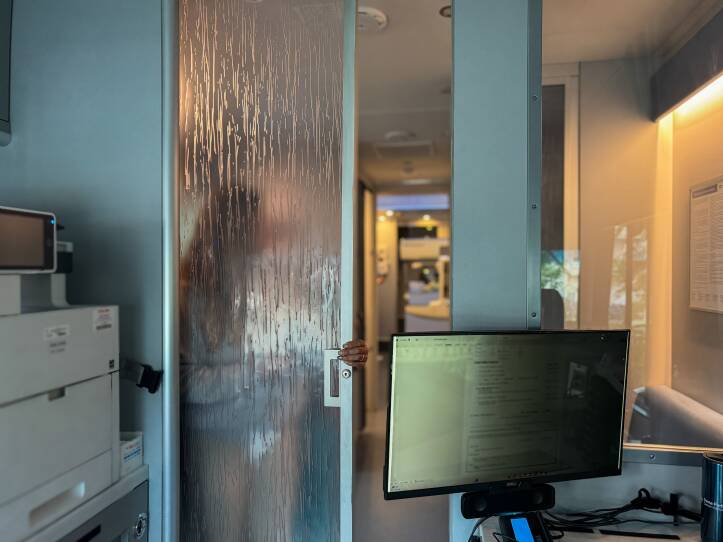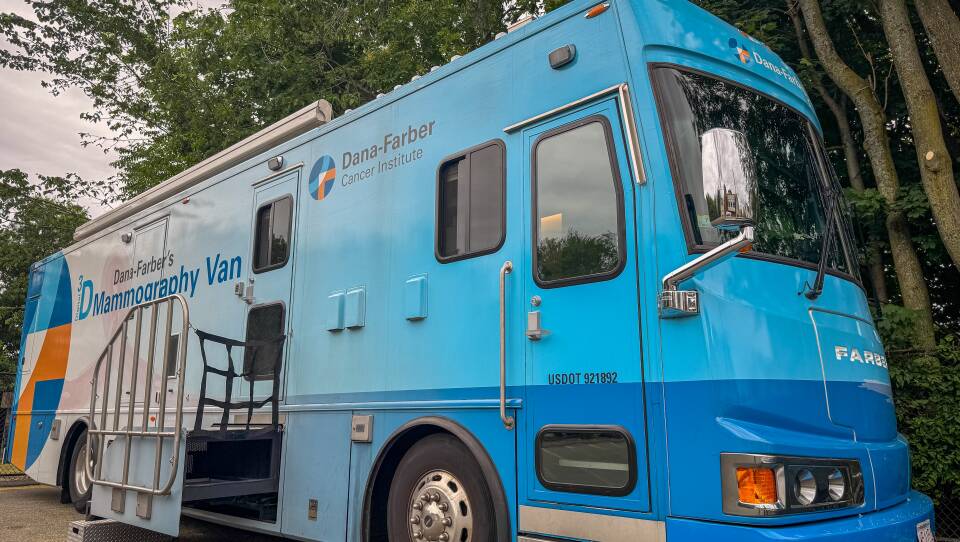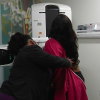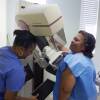Twenty-five years ago, breast cancer screening rates among Asian women in Boston painted a stark picture of health inequity. In 1999, only a quarter of Asian women reported having had a mammogram — about half the citywide average.
Today, that gap has closed. According to the 2023 Health of Boston report, Asian women are getting screened at rates on par with the citywide average of 77%.
This surge “is not an accident,” says Magnolia Contreras, Dana-Farber Cancer Institute’s vice president of community health.
In the early 2000s, in partnership with local health centers, cultural organizations, and faith-based groups, the institute launched the Dana-Farber mobile Mammography Van — Massachusetts’ only traveling breast cancer screening service.
The unit meets women where they live and work, offering care in the languages they speak. By bringing screenings to neighborhoods with large Asian and other minority populations, the van shows how community-based, culturally responsive care can reduce disparities and improve access to critical health resources.
Tackling Barriers to Care
Breast cancer is the second most common cancer among women in the United States, with approximately one in eight women facing a diagnosis during her lifetime. Mammograms are noninvasive X-rays that can detect cancer years before symptoms appear and remain the only screening method with strong evidence of reducing death rates in average-risk women.
Still, many women never receive them. In a 2011 study, Lisa Gualtieri, a scientist at the Harvard T.H. Chan School of Public Health and Tufts School of Medicine, and her team identified major barriers among Vietnamese, Chinese, and South Asian women in Massachusetts: cultural stigma, lack of insurance knowledge, and basic logistical hurdles like time off work or child care.
“One of the things that we discovered almost accidentally was that screenings were free to anybody with insurance, and people didn’t know that,” says Gualtieri. “And so when you think about all the barriers in terms of missing work, getting childcare, transportation, just the time involved, people also had this perceived barrier that it was going to cost when it didn’t.”
Even when cost and access are no longer obstacles, fear can still prevent women from going for the screenings, especially those facing their first mammogram.
“I hear that all the time: ‘My breasts are going to be squashed!’” says Kate Kuleck, a technician working on the mobile unit who speaks Polish, English, and some Russian. “But the machines we use today are much better than what their mothers or grandmothers had. Being able to explain that in their language helps ease that anxiety.”
For some patients, though, the hesitation isn’t just about the procedure. Cultural norms can discourage open conversations about breast health and make it harder to seek care even when it’s available.
“These are women coming from backgrounds where you don’t talk about sex, you don’t talk about reproductive organs, you don’t talk about the female body,” said Cynthia Gabriel, a Women’s and Gender Studies lecturer at the University of Michigan. “When you get people working in that van who can understand that and formulate dialogue around that, it’s really important.”

Meeting patients where they are
Despite its name, the “van” is more like a full-sized RV. Inside, there is advanced imaging technology, a registration area, and private screening rooms. Patients climb the narrow metal steps where they are greeted by a technician, often in their own language, before being guided to the back for their mammogram.
Since its launch in 2002, Dana-Farber’s Mammography Van has provided over 50,000 mammograms and breast health services. It now operates three to four days a week, serving 30 to 40 patients daily. About 40 percent report that English is not their preferred language.
In addition to Asian communities, the van has also reached other minority groups, including Black and Latina women. Technologists guide patients through the process, and interpreters are available for registration and medical consultations. In languages like Mandarin, Vietnamese, and Cantonese, posters, newspaper articles, and digital marketing help spread awareness about the van and the importance of routine screening.
Contreras says the van alone doesn’t explain the dramatic rise in screenings. But, she’s confident it played a major role. Partnerships with community health centers ensure that women who need follow-up care receive it quickly.
“When we were able to get data and reflect on [the increased rates], I was like, ‘Oh my God. I know the van is a part of that,’” she says. “Nobody can tell me that it’s not.”
Still, she adds, the work isn’t finished.
“We can share it, relish in that, and we need to do more.”
The authors are all students in the Graduate Program in Science Writing at MIT.








